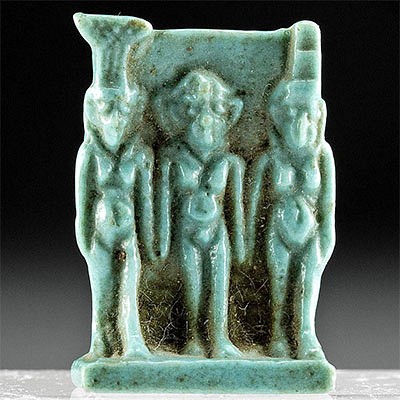19th C. African Wurkun Wood Wundul Figure w/ Ornaments
Lot 248
About Seller
Artemis Gallery
686 S Taylor Ave, Ste 106
Louisville, CO 80027
United States
Selling antiquities, ancient and ethnographic art online since 1993, Artemis Gallery specializes in Classical Antiquities (Egyptian, Greek, Roman, Near Eastern), Asian, Pre-Columbian, African / Tribal / Oceanographic art. Our extensive inventory includes pottery, stone, metal, wood, glass and textil...Read more
Categories
Estimate:
$800 - $1,200
Absentee vs Live bid
Two ways to bid:
- Leave a max absentee bid and the platform will bid on your behalf up to your maximum bid during the live auction.
- Bid live during the auction and your bids will be submitted real-time to the auctioneer.
Bid Increments
| Price | Bid Increment |
|---|---|
| $0 | $25 |
| $300 | $50 |
| $1,000 | $100 |
| $2,000 | $250 |
| $5,000 | $500 |
| $10,000 | $1,000 |
| $20,000 | $2,500 |
| $50,000 | $5,000 |
| $100,000 | $10,000 |
| $200,000 | $20,000 |
About Auction
By Artemis Gallery
Aug 5, 2021
Set Reminder
2021-08-05 10:00:00
2021-08-05 10:00:00
America/New_York
Bidsquare
Bidsquare : VARIETY SALE | Antiquities & Ethnographic Art
https://www.bidsquare.com/auctions/artemis-gallery/variety-sale-antiquities-ethnographic-art-7292
Featuring classical antiquities, ancient and ethnographic art from cultures encompassing the globe. Egyptian, Greek, Roman, Etruscan, Near Eastern, Asian, Pre-Columbian, Native American, African / Tribal, Oceanic, Spanish Colonial, Russian, Fossils, Fine Art, more! Artemis Gallery info@artemisgallery.com
Featuring classical antiquities, ancient and ethnographic art from cultures encompassing the globe. Egyptian, Greek, Roman, Etruscan, Near Eastern, Asian, Pre-Columbian, Native American, African / Tribal, Oceanic, Spanish Colonial, Russian, Fossils, Fine Art, more! Artemis Gallery info@artemisgallery.com
- Lot Description
West Africa, Nigeria, Wurkun people, ca. late 19th to early 20th century CE. A large wooden anthropomorphic figure known as a wundul with stylized features adorned with fiber tassels, wood beads, and vegetal strips. The abstract body has a conical foot that supports the barrel-shaped torso, with a pronounced belly button. Two deep grooves indicate arms, and the long neck is covered with many layers of knotted and twisted grass and leaf strips. A cord strung with over two dozen small red beads is tied to the neck as well. The face is narrow with simple features; incisions for mouth, drilled holes for nostrils, and brass rivets attached as the eyes. A large fin-shaped headdress surmounts the figure, with a red and black fiber tassels attached through the drilled perforations. Wundul figures represented ancestors and were used in a ceremonial context as protectors. Size: 5.75" L x 3.75" W x 15.75" H (14.6 cm x 9.5 cm x 40 cm); 24.25" H (61.6 cm) on included custom stand.
Provenance: private Houston, Texas, USA collection, purchased from Hammill Gallery, Boston, Massachusetts, USA in 2014
All items legal to buy/sell under U.S. Statute covering cultural patrimony Code 2600, CHAPTER 14, and are guaranteed to be as described or your money back.
A Certificate of Authenticity will accompany all winning bids.
Replace: PLEASE NOTE: Due to recent increases of shipments being seized by Australian & German customs (even for items with pre-UNESCO provenance), we will no longer ship Replace: most antiquities and ancient Chinese art to Australia & Germany. For categories of items that are acceptable to ship to Australia or Germany, please contact us directly or work with your local customs brokerage Replace: firm.
Display stands not described as included/custom in the item description are for photography purposes only and will not be included with the item upon shipping.
#162904Fraying and discoloration to fiber tassels. Stable pressure fissure across body and head. Abrasions and nicks to high-pointed areas. Dark patina and vegetal and bead pieces are well preserved.Condition
- Shipping Info
-
All shipping is handled in-house for your convenience. Your invoice from Artemis Gallery will include shipping calculation instructions. If in doubt, please inquire BEFORE bidding for estimated shipping costs for individual items.
-
- Buyer's Premium



 EUR
EUR CAD
CAD AUD
AUD GBP
GBP MXN
MXN HKD
HKD CNY
CNY MYR
MYR SEK
SEK SGD
SGD CHF
CHF THB
THB













